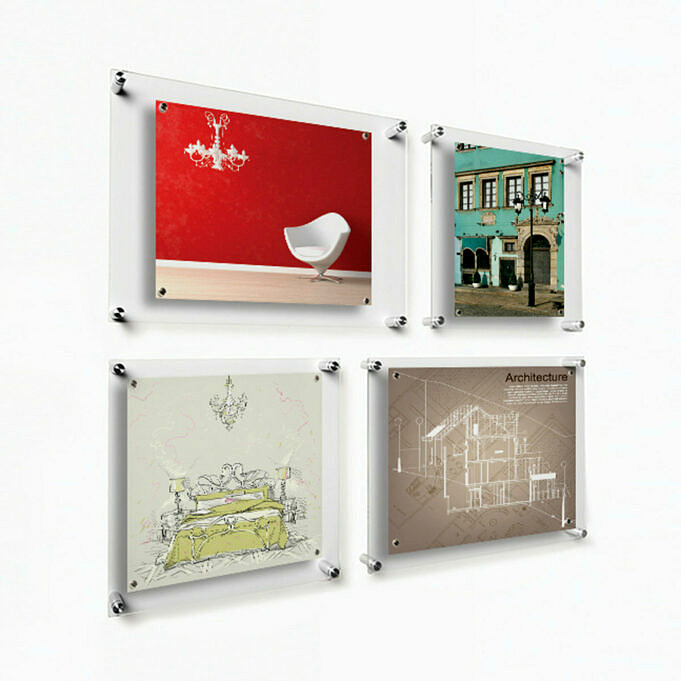As a minor detail, both prints I wanted to frame had a windmill. Thinking, what if? I grabbed four pieces of scrap wood, made a pinwheel, and thought, not bad! Adding the faux wedges-just to see what they would look like-turned out to be the perfect finishing touch for one of my most popular designs.
Make The Pinwheel
This frame is suitable for quarter-sawn white oak, since it channels the Arts and Crafts era.
Photo 1. Photo 1.
Mill the stock to 3/10 cm thickness and joint one edge. Rip the vertical and horizontal frame parts (A, B, Fig. Cut the A and Cutting List slightly larger and join them to the final 5 cm in width. Attach a fence to the miter gauge. Square one end of each piece. Then use a clamped-on stop to cut them to final length (Photo 1).
Lay out the pinwheel and mark the parts on the end and side for the #0 biscuit slots. (The first time I made this frame I used mortises and loose tenons. Trust me: Biscuit joinery saves a substantial amount of time!)
Photo 2. Photo 2. To ensure that the biscuit joiner doesn’t move during cutting, clamp a support block flush to the end.
Because the slots are larger than the parts of the frame, the slots must be cut towards the outside of frame. Dont worry. You can hide any exposed slots with corner details. Mark the end of each part 5/20 cm from its outside edge to register the biscuit joiner. Clamp each part next to a support block to cut the slot (Photo 2).
Photo 3. Cut a slot in one edge of each frame side, located to align with the slot in the end of the other frame side that forms the butt joint.
Clamp the frame together and extend the marks to the adjacent parts. Use these marks to cut the slots in the edges (Photo 3).
Photo 4. Glue the frame together after shortening the biscuits to fit inside the joints. Assemble the opposite corners first. Then slide the two halves together.
Reduce the length of the biscuits to ensure they don’t stick out beyond the joint. Install the biscuits in the ends and glue the frame together. (Photo 4). This frame is easy to clamp because it doesn’t have miters!
The Back
Fig. A. Exploded View
To ensure that all joints are flush, sand the frame on both ends. Mark the back to ensure that you don’t misunderstandly rout 1/10 cm wide x
Photo 5. Rout a rabbet on the back of the opening for the glass. Complete the rabbet by making several passes and raising the bit with each pass. Square the corners with a chisel.
You will need to rout the rabbet using successive passes, increasing the bit by increments ( Photo 5,). Start with the bit set 1/20 cm above the table and position the frame before you start the router. Move the frame in the direction of the bits rotation, then move it clockwise. After each pass, turn off the router and wait for the bit’s rotation to stop before you remove the frame or raise the bit.
Use a chisel to square the router’s rounded corners manually.
Photo 6. Drill pockets to house the turn buttons and strap hangers using a Forstner bit.
Its easy to make the frame hang flush against the wall. All mounting hardware can be recessed. Install a 3 cm dia. Drill holes with the Forstner bit using the drill press, centered Photo6; Figure A. To determine the holes depth, subtract the thickness the glass, image, mat and backing from the
Add The Faux Wedges
Cut the 3 cm square faux wedges (C) from a blank milled Photo 7).
Photo 7. Cut the faux wedges using a pull saw and a mini miter box.
Finish-sand the both frame and the faux wedges before gluing them on. When the pieces are separated, it is easier to sand and smoothen the corners. Mark the inside corner of each faux wedge and make sure to keep it square.
Photo 8. Glue on the faux wedges to cover the visible slots, using a 1/20 cm hardboard shim to center the wedge on the edge of the frame.
Each faux wedge should be oriented to match the grain on its butted frame side. Test-fit each wedge and sand its inside corner to correct any misalignment. When you glue on each faux wedge, insert a 1/20 cm spacer underneath to center the wedge on the frames edge. This creates a setback at one end and a shadow at the other. Attach the faux wedges to both sides by gluing them ( Photo8).
Fig. B. Joinery Details
Cutting List
Layer The Finish
Apply a layer finish with both oil-based and water-based dyes to create an authentic Arts-and-Crafts look. Dont roll your eyes: this finish is very easy to apply and the results are well worth the effort.
Bio
Laurie McKichan’s furniture is simple, direct and honest. You can see more of her work at lauriemckichan.com.
Product Recommendations
These are the tools and supplies we use every day in our shop. We may receive a commission from sales referred by our links; however, we have carefully selected these products for their usefulness and quality.



